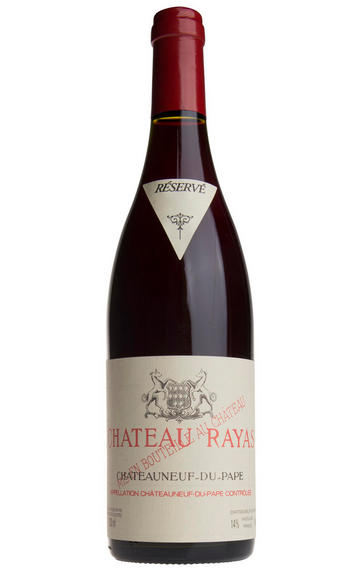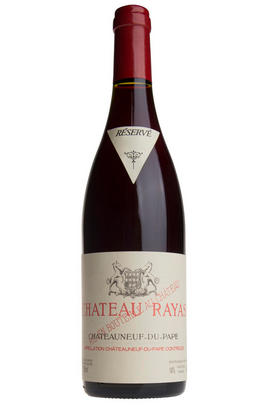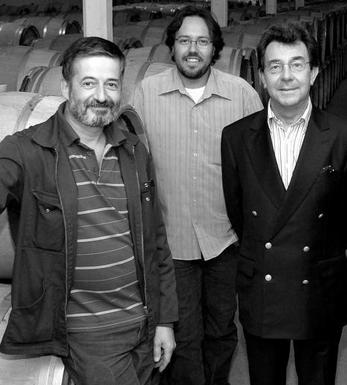
1998 Châteauneuf-du-Pape Rouge, Château Rayas, Rhône

Critics reviews
Magnum served blind. Absolutely glorious. Extremely sweet and rich. Very flattering and obviously mature. Lightly sandy texture and strong tamarind notes. Jewel-bright fruit that is much more direct in its appeal than the Beaucastel 1983 served immediately before it. Over time, it became grainer and developed some brown-sugar notes—pure pleasure.
Drink 2010 - 2028
Jancis Robinson MW, JancisRobinson.com (April 2019)
There is no doubt about the extraordinary depth and layers of flavour the 1998 Rayas Chateauneuf du Pape contains. The colour is medium to deep ruby, and the bouquet offers aromas of ripe strawberry and cherry candy, with kirsch liqueur thrown in for additional interest. The wine is full-bodied and fat on the palate, with high levels of sweet fruit, a velvety texture, multiple dimensions, and an explosive finish.
It is an undeniably sexy, compelling Rayas that is already performing exceptionally well despite having been bottled only a few months ago. There are several thousand additional bottles available for the world's market. My best guess is that this voluptuous, sexy Rayas should drink well young yet age easily for 15-16 years. Do not be surprised to see it put on considerable weight over the next few years.
Robert M. Parker, Jr., Wine Advocate (October 2000)
Deep red colour. Superripe, liqueur-like aromas of raspberry, cassis and pepper. Thick and voluminous, with sound acidity, giving it excellent freshness and cut. Striking depth of fruit. Finishes with substantial but unaggressive tannins. I don't find this wine quite as fearsome today as Reynaud suggests. It will age well but should also be accessible in its youth.
Emmanuel Reynaud has quickly shown himself to be a worthy caretaker of this fabled estate's superb holdings and a flexible, non-interventionist vinifier. After making one of the Chateauneuf appellation's most satisfying '97s, he has followed up with a very strong set of '98s, including a potentially outstanding Chateau Rayas and an explosive Fonsallette Syrah. Interestingly, in marked contrast to some of his colleagues, Reynaud describes the '98 Rayas as a tannic vin de garde while he considers the '95 to be a fruit-driven wine for earlier drinking.
Stephen Tanzer, Vinous.com (January 2000)
The only wine that seemed a little out of place was the 1998 Châteauneuf-du-Pape. It offered attractive suggestions of sweet liquorice, underbrush and herbs but didn’t have the depth of fruit of the wines that would follow.
This wine was tasted at Daniel during a dinner that was auctioned at the Jackson Hole Wine Auction.
Antonio Galloni, Vinous.com (August 2007)
About this WINE

Château Rayas
Jacques Reynaud, who died in 1997, was one of the true characters in Châteauneuf. A notoriously shy and private man, he was known to avoid appointments by hiding in ditches that lined the rutted driveway leading to his château. However, he was recognised as one of the world's greatest winemakers and the legacy of Château Rayas is now continued by his son François.
So many practices here seem to run contrary to other producers in Châteauneuf - the 13 hectares of vines are north facing and contain none of the fabled "galets roulés". Only Grenache is used and yields at around 15hl/h are ridiculously low. Almost uniquely the wines are matured in the now rarely seen 450 litre "double-piéce" oak casks. These are substantial and exotically rich wines that are quite literally unique.

Châteauneuf-du-Pape
The most celebrated village of the Southern Rhône, Châteauneuf-du-Pape is the birthplace of the now indispensable French Appellation d’Origine Contrôlée system – imperfect though it may be. Compared to the Northern Rhône, the vineyards here are relatively flat and often feature the iconic galet pebbles – the precise benefits of which are a source of much debate. Minimum alcohol levels required by the AOC are the highest in France, but at 12.5% it is well below the natural generosity of Grenache, which only achieves its full aromatic potential when it is fully ripe and laden with the resultant high sugars. Syrah and Mourvèdre contribute the other defining elements in the blend, adding pepper, savoury spice and structure to the decadent Grenache. There are a further 10 permitted red grape varieties which can be used to adjust the “seasoning”. Of the five white varieties permitted, it is Grenache Noir’s sibling – predictably perhaps – Grenache Blanc, which dominates, though Roussanne shows a great deal of promise when handled well, notably at Château de Beaucastel.

Southern Rhône Blend
The vast majority of wines from the Southern Rhône are blends. There are 5 main black varieties, although others are used and the most famous wine of the region, Châteauneuf du Pape, can be made from as many as 13 different varieties. Grenache is the most important grape in the southern Rhône - it contributes alcohol, warmth and gentle juicy fruit and is an ideal base wine in the blend. Plantings of Syrah in the southern Rhône have risen dramatically in the last decade and it is an increasingly important component in blends. It rarely attains the heights that it does in the North but adds colour, backbone, tannins and soft ripe fruit to the blend.
The much-maligned Carignan has been on the retreat recently but is still included in many blends - the best old vines can add colour, body and spicy fruits. Cinsault is also backtracking but, if yields are restricted, can produce moderately well-coloured wines adding pleasant-light fruit to red and rosé blends. Finally, Mourvèdre, a grape from Bandol on the Mediterranean coast, has recently become an increasingly significant component of Southern Rhône blends - it often struggles to ripen fully but can add acidity, ripe spicy berry fruits and hints of tobacco to blends.


Buying options
Add to wishlist
Description
Magnum served blind. Absolutely glorious. Extremely sweet and rich. Very flattering and obviously mature. Lightly sandy texture and strong tamarind notes. Jewel-bright fruit that is much more direct in its appeal than the Beaucastel 1983 served immediately before it. Over time, it became grainer and developed some brown-sugar notes—pure pleasure.
Drink 2010 - 2028
Jancis Robinson MW, JancisRobinson.com (April 2019)
wine at a glance
Delivery and quality guarantee